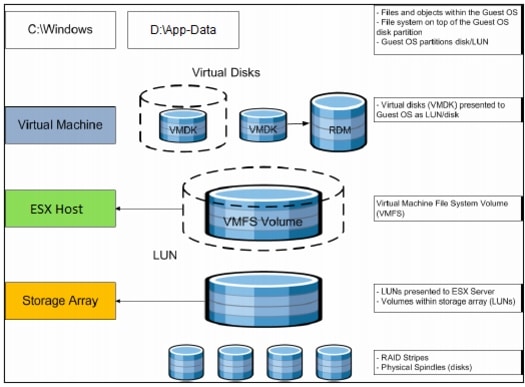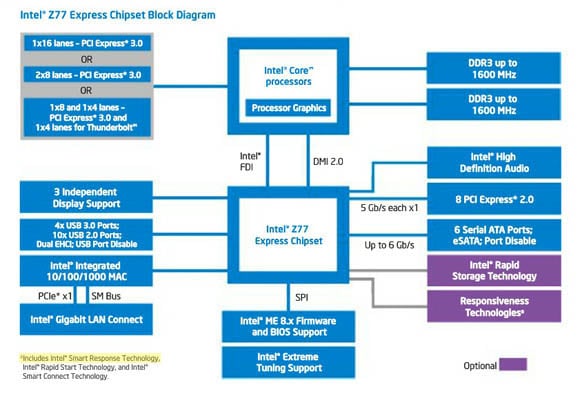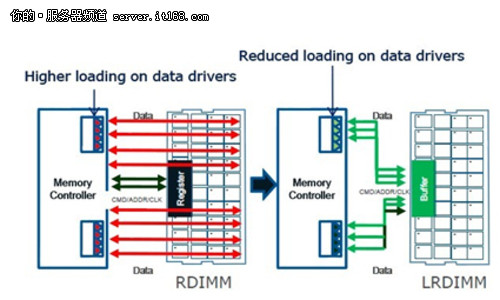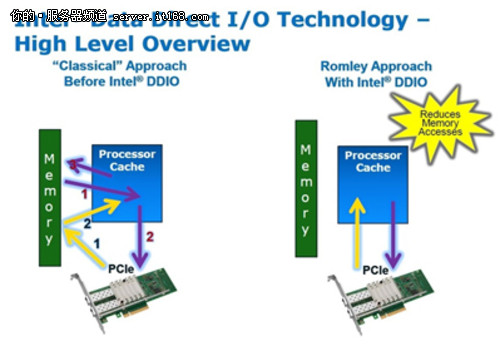


Virtual Networking Best Practices
Following are the vSphere networking best practices:
•![]() Separate virtual machine and infrastructure traffic—Keep virtual machine and VMkernel or service console traffic separate. This can be accomplished physically using separate virtual switches that uplink to separate physical NICs, or virtually using VLAN segmentation.
Separate virtual machine and infrastructure traffic—Keep virtual machine and VMkernel or service console traffic separate. This can be accomplished physically using separate virtual switches that uplink to separate physical NICs, or virtually using VLAN segmentation.
内存总线变化




QPI:QuickPath Interconnect




Dell R720服务器

PowerEdge R720也加入了对LRDIMM(Load-Reduced DIMM,低负载DIMM)内存的支持。通过将RDIMM内存上的Register芯片改为iMB(isolation Memory Buffer)内存隔离缓冲芯片,LRDIMM内存降低了数据传输总线的负载,让内存系统的整体能耗下降到原来的50%。

至强E5平台的最大特点就是加入了DDIO技术。目前服务器应用的I/O数据处理方式,面对成千上万的网络请求以及数据存储队列,缓存较小的CPU通常会将大部分数据储存在内存上,只能优先处理本地缓存上的代码,换句话说CPU需要不断地和内存交换数据,即便目前支持三通道乃至四通道内存,内存的带宽和周期仍然远远低于CPU缓存,这就是性能提升的瓶颈。DDIO的好处就是I/O数据不必再经过内存,可以直接放到缓存中供CPU读取,这样就降低了I/O-内存以及内存-CPU之间的延迟,处理大规模I/O数据时效果更明显。
This is much like DDR(double data rate) memory. 1333"mhz" memory is really only at 667mhz, but it delivers data at the rising and falling of the clock cycle, so it should technically be called 1333MT/s ram.
The old Mhz was used on the FSB when it really didn't tell the truth; the bus was 4x slower than the actual Mhz they showed, because the bus was quad pumped. Now the QPI bus transfers at 2 times per clock cycle like DDR. Intel calls this double pumped.
QPI transfers data at 4 bytes per clocktransfer. The first gen i7 9xx series had a QPI of either 4.8GT/s(2.4ghz) or 6.4GT/s(3.2ghz), thus giving the bandwidth of 19.2 or 25.6GB/s.
DMI is not a new bus. DMI was on the first gen i7 platform connecting the northbridge to the southbridge at 10Gb/s. The new LGA 1155 platform removed the northbridge, so now all that is left is the DMI connecting the processor to the southbridge.
Edit: I should also add that in Sandy Bridge DMI 2.0 has a connection that can transfer at 20Gb/s(2.5GB/s). Each direction only gets half of that bandwidth, which would be 10Gb/s or 1.25GB/s.
The high end LGA 2011 platform that just released doesn't even have QPI anymore either. I believe QPI is only going to be used in server platforms from now on as Pci-e bandwidth was the only reason the first gen i7 needed that much bandwidth. Pci-e has now been integrated onto the CPU die for a direct connection instead.
Bus width can change the amount of data a bus can deliver even if it stays at the same speed.
FSB- Had to handle Memory Bandwidth, Pci-e Bandwidth(graphics cards and such), and southbridge bandwidth(hard drive, ethernet, etc.).
QPI- Had to handle much more Pci-e Bandwidth and southbridge bandwidth. Intel had at this point separated the memory controller to have its own separate bandwidth.
DMI- It only connects to the southbridge. Intel now has Pci-e bandwidth and Memory bandwidth handled by separate controllers on the CPU.
DMI is based on Pci-e(which is at 2.5GT/s), and it has 4 lanes of pci express, which gives it its 1GB/s data bandwidth(250MB/s per lane). DMI 2.0 uses pci-e 2.0(which is 5GT/s), which doubles that to an effective 2GB/s for data.

- PCPU(%):这个度量值表示每个物理CPU的CPU利用率,后面是所有CPU的平均利用效率。该数据以系列数字显示出来,每个表示一个单独的物理CPU,后面的数字是所占用的总和,每一个都是另外所有的数字的平均值。这条信息代表所有可用CPU的CPU请求的分布情况。如果虚拟机的CPU请求开始更多地使用一个特定CPU的话,就需要监控该统计信息。
透明页共享
http://wahlnetwork.com/2011/09/22/numa-woes-battling-high-cpu-rdy-on-vsphere-4/
http://www.yellow-bricks.com/esxtop/




